 |
|
|
| (Information by Peter Kessler, with additional information by Edward Dawson, from The Mongol Empire: Genghis Khan: His Triumph and his Legacy, Peter Brent (Book Club Associates, 1976), from The Mongols: A Very Short Introduction, Morris Rossabi (Oxford University Press, 2012), from International Orders in the Early Modern World: Before the Rise of the West, Yongjin Zhang, Shogo Suzuki, & Joel Quirk, from the New World Encyclopaedia, from Crimean Tatars, H B Paksoy, from The Origins of Northern China's Ethnicities, Zhu Xueyuan (Beijing 2004), from The History of the Medieval World: From the Conversion of Constantine to the First Crusade, Susan Wise Bauer (2010), from Genghis Khan, Paul Ratchnevsky (Thomas Nivison Haining, Trans & Ed, Cambridge, Massachusetts, 1991), and from External Links: Turcology and Linguistics, Éva Ágnes Csató (with editors), text by Peter B Golden, and The Shaping of the Cuman-Qïpchaqs, Peter B Golden, and Origins of the Volga Tatars, and Tatar.net (dead link), and The True Origin of the Mongols?, John Man (Oxford Alumni, 28 July 2020).) |
|
|
| 1380 - 1395 |
Toqtamish Khan / Toctamish |
Former White Horde khan. Reunited the Golden Horde. |
| 1380 - 1386 |
Now resurgent under the leadership of Toqtamish Khan, the reunited Golden Horde defeats the Muscovites (in 1382) in retaliation for their attack against the Blue Horde. This delays their fight for independence, and Toqtamish also sets about restoring Mongol rule over all of the former Blue Horde and White Horde lands, from (Mongol) Crimea to Lake Balkhash. 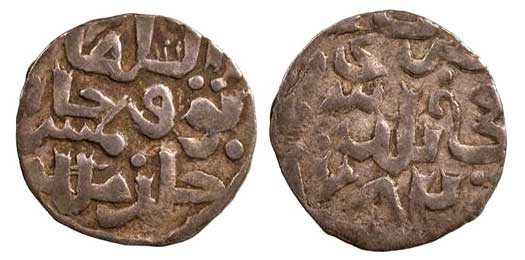 Shown here are two sides of a dirham coin issued from Sarai during the reign of Toqtamish Khan, who was instrumental in reuniting the Golden Horde Shown here are two sides of a dirham coin issued from Sarai during the reign of Toqtamish Khan, who was instrumental in reuniting the Golden Horde |
|
| However, an ambitious attack on the Chobanids who rule northern [ Persia](../KingListsMiddEast/EasternPersia.htm#Il-Khan Puppets) and the disputed Caucasus region allows Timur to fill the power vacuum and found his own Timurid dynasty which is centred on Persia. |
|
|
| 1395 |
The Golden Horde is beaten by Timur of Persia, allowing him to claim complete control of the Caucasus, which probably includes the Alani to its north. Moscow benefits from the disaster by asserting its independence. The horde's capital at Sarai is sacked by Timur - along with the city of Astrakhan - while the horde itself is forced to accept vassalage and a puppet ruler in the form of Temur Qutlugh. His long-time supporter, Edigu, gains the powerful position of vizier, and during the early 1400s he re-founds the Nogai Horde as his own independent fiefdom.  Nogais, also known as mangyts - people of the Nogai Horde - referred to their state as the Mangyt Yurt, with the earliest references being found in Turkish, Russian, and Western European sources Nogais, also known as mangyts - people of the Nogai Horde - referred to their state as the Mangyt Yurt, with the earliest references being found in Turkish, Russian, and Western European sources |
|
| 1395 - 1399 |
Temur Qutlugh |
Son of Temur Malik of the White Horde. Puppet. |
| 1395 - ? |
Koirichak |
Lesser khan of the Blue Horde. Subject to Temur's authority. |
| 1395 - 1419 |
Edigu |
Vizier. Later re-founded the Nogai Horde. |
| 1399 |
Temur Qutlugh is killed at the Battle of the River Vorskla while fighting a rebellion by the son of Toqtamish Khan. The fate of Koirichak is unknown (although his son appears as a contender for power in 1422), but the Blue Horde does not retain an independent status by this time, being governed merely as a subject division of the Golden Horde. Temur's successor remains in the shadow of the powerful Edigu. |
|
| 1399 - 1407 |
Shadî Beg |
Brother of Temur Qutlugh. Removed by Edigu for rebelling. |
| 1405 |
After the death of Timur, none of the Timurid royalty accept his choice of successor and Pir Muhammad is unable to enforce his rule in Transoxiana, splitting the empire in two. The western portion is ruled by Shah Rukh from [Herat](AsiaAria.htm#Timurid Herat) in Southern Khorasan, and his wife, Goharshad moves the capital there from Samarkand. 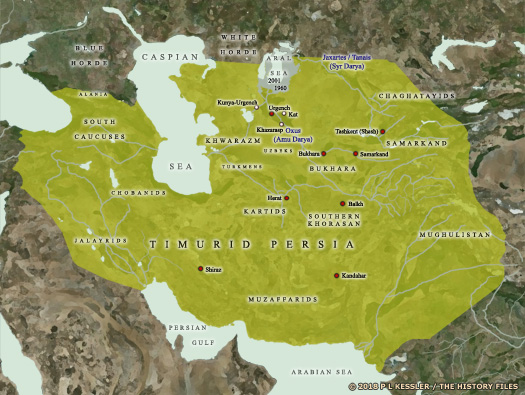 Timur effectively recreated the ancient Persian empire through his various conquests over the course of almost forty years, subduing many competing clans and khanates which would begin competing again after his death (click or tap on map to view full sized) Timur effectively recreated the ancient Persian empire through his various conquests over the course of almost forty years, subduing many competing clans and khanates which would begin competing again after his death (click or tap on map to view full sized) |
|
| The eastern portion of Transoxiana is ruled from the same Samarkand. The confusion also acts as a prompt for the Ottomans to re-invade [ Greater Armenia](../KingListsMiddEast/AnatoliaArmenia.htm#Lesser Armenia) and annexe it to their own empire while the subservient Golden Horde fractures into separate states. The waning power of the khans leads the state into decline and records from this point become increasingly patchy. |
|
|
| 1407 - 1410 |
Pulad Khan |
Brother. Dethroned. |
| 1410 - 1411 |
Temur Khan |
Son of Temur Qutlugh. |
| 1411 |
Jalal ad Din, son of the powerful Toqtamish Khan who had reunified the Golden Horde, has been in exile for some years. Fighting alongside the[ Lithuanians](../KingListsEurope/EasternLithuania.htm#Grand Duchy of Lithuania), he has taken part in the Battle of Tannenberg to defeat the Teutonic Knights and it is with Lithuanian support that he is able to overthrow Temur Khan. Unfortunately, after a brief reign of the Golden Horde from 1411, during which time he writes a history of the Mongol empire, he is murdered by his brother, Karim Berdi in 1412. 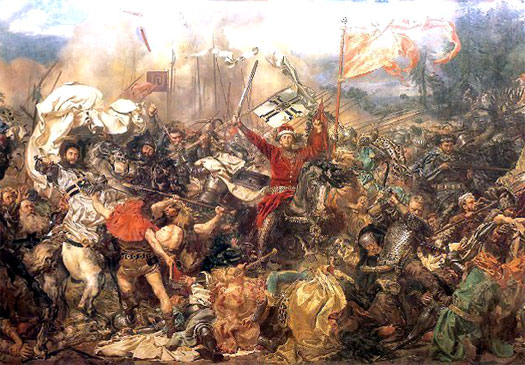 Moscow fought a series of wars against the then-dominant Grand Duchy of Lithuania & Ruthenia (the latter being western Rus) during the fifteenth century, but Moscow's eventual victory would present it with new threats, such as the Tartars of the powerful Crimean khanate (click or tap on image to view full sized) Moscow fought a series of wars against the then-dominant Grand Duchy of Lithuania & Ruthenia (the latter being western Rus) during the fifteenth century, but Moscow's eventual victory would present it with new threats, such as the Tartars of the powerful Crimean khanate (click or tap on image to view full sized) |
|
| 1411 - 1412 |
Jalal ad Din |
Son of Toqtamish. Known as the 'Green Sultan'. |
| 1412 - 1417 |
The untimely death of Jalal ad Din and the seizure by his murderous brother of the throne triggers some years of violent dispute, not only amongst the many sons of Toqtamish Khan but also against the power-hungry Edigu, who has his own puppet contenders for the throne. |
|
| 1412 - 1414 |
Karim Berdi |
Brother. |
| 1414 |
Kebek Khan |
Brother. |
| 1414 - 1417 |
Chokra Khan |
Son of Akmyl. Supported by Edigu. |
| 1417 - 1419 |
Yeremferden / Jabbar Berdi Khan |
Brother of Kebek Khan. Brought relative peace to the horde. |
| 1419 |
Yeremferden's death sees the horde divided over its next ruler. Ulugh Muhammad claims power, but this is contested by the son of Yeremferden, Dawlat Berdi (and by several other would-be khans). Ulugh initially controls Sarai and is therefore seen more as the legitimate contender, but he is captured by Dawlat in 1422 and is imprisoned for two years.  Timurid soldiers glance back at a skull tower following the sack of Moscow in 1383, with such structures being the epitome of Timur's ruthlessness being repeated throughout his campaigns Timurid soldiers glance back at a skull tower following the sack of Moscow in 1383, with such structures being the epitome of Timur's ruthlessness being repeated throughout his campaigns |
|
| 1419 - 1422 |
Ulugh Muhammad / Olug Moxammat |
Nephew. Disputed claimant for the khanate. Exiled. |
| 1419 - 1422 |
Dawlat Berdi / Devlet |
Son of Yeremferden. Rival for the khanate. Exiled. |
| 1419 |
Dervish Khan |
Rival, supported by Edigu. |
| 1419 |
Qadeer Berdi |
Son of Toqtamish. Rival. |
| 1419 |
Hajji Muhammad Khan |
Son of Oghlan Ali. Rival, supported by Edigu. |
| 1422 |
Both the imprisoned Ulugh Muhammad and the successful Dawlat Berdi are defeated and driven out by Baraq, yet another claimant. The only positive result is that the horde is reunited under one ruler, although peace is far from restored (it is Baraq's son, Janybeg Khan, who goes on to found the Kazakh khanate in 1465). |
|
| 1422 - 1427 |
Baraq Khan |
Son of Koirichak. Assassinated. |
| 1427 |
Following the assassination of Baraq, Dawlat Berdi establishes a base in (Mongol) Crimea, which he is able to defend even against an attempted invasion by Ulugh Muhammad in 1430. This defeat is claimed as the reason for the otherwise mysterious death of Vytautas 'the Great' of [ Lithuania](../KingListsEurope/EasternLithuania.htm#Grand Duchy of Lithuania) in his role as Ulugh's main supporter. 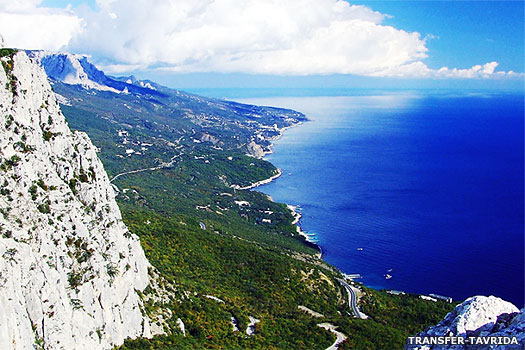 Crimea's southern coast largely consists of mountains and sharp descents towards the sea line, all of which provides it with an element of protection from the sea Crimea's southern coast largely consists of mountains and sharp descents towards the sea line, all of which provides it with an element of protection from the sea |
|
| However, despite the best attempts by Dawlat, he is never entirely able to defeat Hajji Giray, a powerful local khan in Crimea who goes on to establish his own independence in 1449 as the first khan of the 'Crimean Khanate'. |
|
|
| 1427 |
Dawlat Berdi / Devlet |
Restored. Reduced to Crimea only. Assassinated. |
| 1427 - 1437 |
Ulugh Muhammad / Olug Moxammat |
Restored, and ruled at Sarai initially. Founded Kazan khanate. |
| c.1433 - 1435 |
Sayyid Ahmad (I) |
Temur Malik descendant. Rival, supported by [ Lithuanians](../KingListsEurope/EasternLithuania.htm#Grand Duchy of Lithuania). |
| c.1435 - 1459 |
Kuchuk Muhammad |
Rival. Gained control of the Golden Horde. |
| 1437 |
Facing pressure from his various opponents, Ulugh Muhammad loses control of the khanate and heads east, where he captures Kazan and founds the Kazan khanate as a splinter state of the disintegrating Golden Horde. This re-uses territory which had previously formed the heartland of Volga Bulgaria. 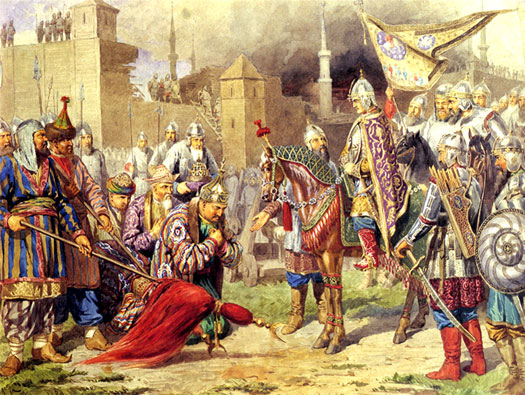 The short-lived Kazan khanate was conquered by the resurgent Rus under the leadership of Ivan IV just over a century after Ulugh Muhammad had founded it The short-lived Kazan khanate was conquered by the resurgent Rus under the leadership of Ivan IV just over a century after Ulugh Muhammad had founded it |
|
| 1449 |
The constant efforts of Hajji Giray to gain either dominance in the horde or independence from it finally bear fruit. He is now able to form the khanate of Crimea as a splinter state of the disintegrating Golden Horde. |
|
| 1453 |
The Eastern Roman capital at Constantinople is finally captured by Ottoman Sultan Mehmed II, bringing to an end the last vestiges of the Roman empire and making Greece an Ottoman province. The loss is viewed as a disaster for the Christian world, but it also completely realigns the balance of power amongst the Turkic tribes and kingdoms to the east and north. Hajji Giray of the Crimean khanate moves quickly to establish a military alliance with Sultan Mehmed, someone he sees as a potential partner in his wars against the Golden Horde. 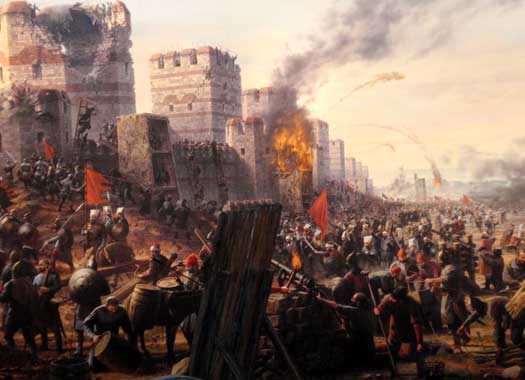 The fall of Constantinople not only ended the last vestiges of the Roman empire, now dating back almost two millennia in its many forms, but it also opened up south-eastern Europe to the Ottoman Turks The fall of Constantinople not only ended the last vestiges of the Roman empire, now dating back almost two millennia in its many forms, but it also opened up south-eastern Europe to the Ottoman Turks |
|
| The first instance of cooperation between Crimean Tartars and the Ottoman military occurs only a year later, when Giray Khan sends seven thousand troops to assist in Mehmed's siege of the Genoese colony of Kaffa, which is situated on the southern Crimean coast. Although it is ultimately unsuccessful, the expedition sets a precedent for future Ottoman-Tartar cooperation. |
|
|
| 1459 - 1465 |
Mahmud Astrakhani |
Son. Formed the Astrakhan khanate in 1465. |
| 1459 |
Mahmud may be the recognised khan, but he faces years of rivalry and contention for the throne from Ahmad, his own brother. In 1465, he gives up the fruitless conflict and forms his own independent power base which has been carved out of Golden Horde territory. Located along the north-western shore of the Caspian Sea, Mahmud's new domain is known as the Astrakhan khanate. 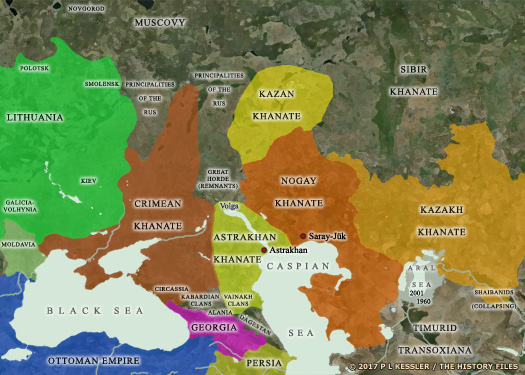 The Mongol empire created by Chingiz Khan gradually broke up over the course of three hundred years until, by around AD 1500, it had fragmented into several more-or-less stable khanates which vied for power and influence, while fending off the Ottoman empire to the south and Moscow state to the north (click or tap on map to view full sized) The Mongol empire created by Chingiz Khan gradually broke up over the course of three hundred years until, by around AD 1500, it had fragmented into several more-or-less stable khanates which vied for power and influence, while fending off the Ottoman empire to the south and Moscow state to the north (click or tap on map to view full sized) |
|
| c.1465 - 1466 |
Ahmad / Akhmat Khan |
Brother. Last khan, surviving with only the Great Horde. |
| 1465 - 1466 |
With the success of Ahmad in gaining power, the Kazakh khanate is formed by Jaybeg Khan, son of Baraq Khan, and the following year the Astrakhan khanate is also formed as a splinter state of the disintegrating Golden Horde. Now, with the powerful and influential Hajji Giray of the Crimean khanate also dead in 1466, the Golden Horde's remnants become known as the Great Horde. |
|
 |
|
|

 Shown here are two sides of a dirham coin issued from Sarai during the reign of Toqtamish Khan, who was instrumental in reuniting the Golden Horde
Shown here are two sides of a dirham coin issued from Sarai during the reign of Toqtamish Khan, who was instrumental in reuniting the Golden Horde Nogais, also known as mangyts - people of the Nogai Horde - referred to their state as the Mangyt Yurt, with the earliest references being found in Turkish, Russian, and Western European sources
Nogais, also known as mangyts - people of the Nogai Horde - referred to their state as the Mangyt Yurt, with the earliest references being found in Turkish, Russian, and Western European sources Timur effectively recreated the ancient Persian empire through his various conquests over the course of almost forty years, subduing many competing clans and khanates which would begin competing again after his death (click or tap on map to view full sized)
Timur effectively recreated the ancient Persian empire through his various conquests over the course of almost forty years, subduing many competing clans and khanates which would begin competing again after his death (click or tap on map to view full sized) Moscow fought a series of wars against the then-dominant Grand Duchy of Lithuania & Ruthenia (the latter being western Rus) during the fifteenth century, but Moscow's eventual victory would present it with new threats, such as the Tartars of the powerful Crimean khanate (click or tap on image to view full sized)
Moscow fought a series of wars against the then-dominant Grand Duchy of Lithuania & Ruthenia (the latter being western Rus) during the fifteenth century, but Moscow's eventual victory would present it with new threats, such as the Tartars of the powerful Crimean khanate (click or tap on image to view full sized) Timurid soldiers glance back at a skull tower following the sack of Moscow in 1383, with such structures being the epitome of Timur's ruthlessness being repeated throughout his campaigns
Timurid soldiers glance back at a skull tower following the sack of Moscow in 1383, with such structures being the epitome of Timur's ruthlessness being repeated throughout his campaigns Crimea's southern coast largely consists of mountains and sharp descents towards the sea line, all of which provides it with an element of protection from the sea
Crimea's southern coast largely consists of mountains and sharp descents towards the sea line, all of which provides it with an element of protection from the sea The short-lived Kazan khanate was conquered by the resurgent Rus under the leadership of Ivan IV just over a century after Ulugh Muhammad had founded it
The short-lived Kazan khanate was conquered by the resurgent Rus under the leadership of Ivan IV just over a century after Ulugh Muhammad had founded it The fall of Constantinople not only ended the last vestiges of the Roman empire, now dating back almost two millennia in its many forms, but it also opened up south-eastern Europe to the Ottoman Turks
The fall of Constantinople not only ended the last vestiges of the Roman empire, now dating back almost two millennia in its many forms, but it also opened up south-eastern Europe to the Ottoman Turks The Mongol empire created by Chingiz Khan gradually broke up over the course of three hundred years until, by around AD 1500, it had fragmented into several more-or-less stable khanates which vied for power and influence, while fending off the Ottoman empire to the south and Moscow state to the north (click or tap on map to view full sized)
The Mongol empire created by Chingiz Khan gradually broke up over the course of three hundred years until, by around AD 1500, it had fragmented into several more-or-less stable khanates which vied for power and influence, while fending off the Ottoman empire to the south and Moscow state to the north (click or tap on map to view full sized)